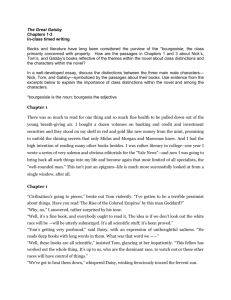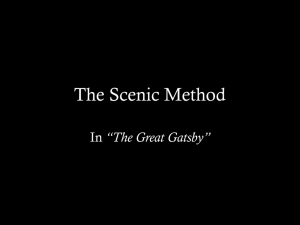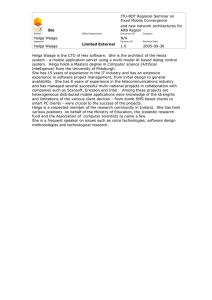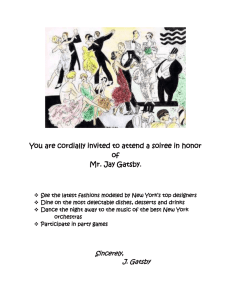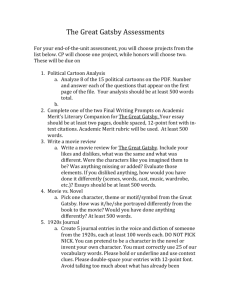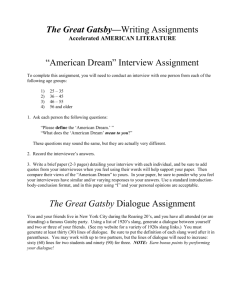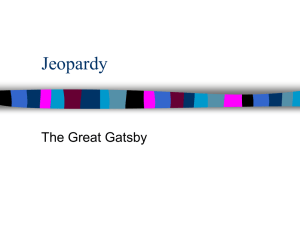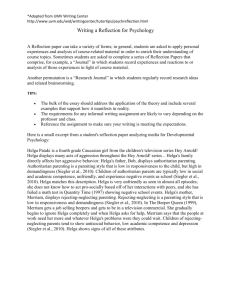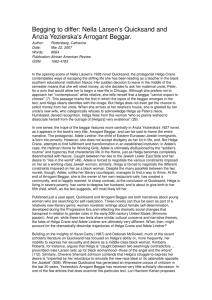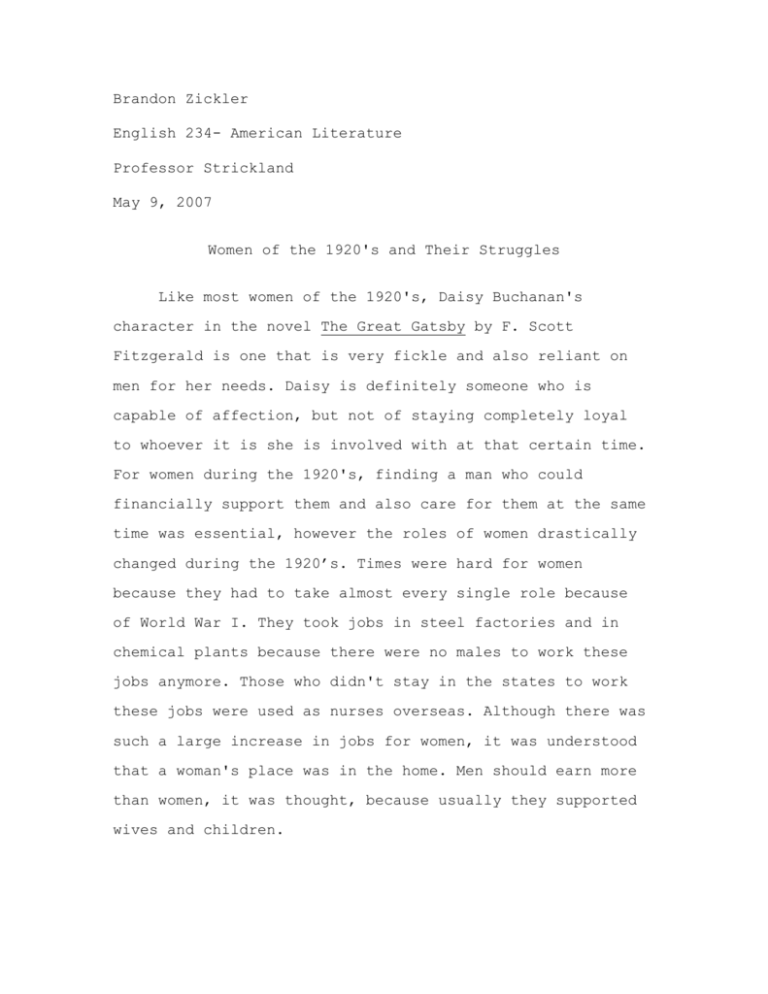
Brandon Zickler
English 234- American Literature
Professor Strickland
May 9, 2007
Women of the 1920's and Their Struggles
Like most women of the 1920's, Daisy Buchanan's
character in the novel The Great Gatsby by F. Scott
Fitzgerald is one that is very fickle and also reliant on
men for her needs. Daisy is definitely someone who is
capable of affection, but not of staying completely loyal
to whoever it is she is involved with at that certain time.
For women during the 1920's, finding a man who could
financially support them and also care for them at the same
time was essential, however the roles of women drastically
changed during the 1920’s. Times were hard for women
because they had to take almost every single role because
of World War I. They took jobs in steel factories and in
chemical plants because there were no males to work these
jobs anymore. Those who didn't stay in the states to work
these jobs were used as nurses overseas. Although there was
such a large increase in jobs for women, it was understood
that a woman's place was in the home. Men should earn more
than women, it was thought, because usually they supported
wives and children.
Zickler 2
In Their Eyes Were Watching God by Zora Neale Hurston,
the character of Janie is one that is constantly looking
for independence and self-fulfillment. Hurston shows us
that the gender differences between men and women during
this time period were to provide each other with things
that they needed but did not possess. Janie sees her
relationships as ones that should be reciprocal and based
on mutual respect, which is a lot different from her
marriages to Logan and Jody. Near the beginning of the
story Janie seems like she isn't happy unless she has
someone in her life. Throughout the novel, Janie's quest
for accomplishment is a self-centered one. She ends up
alone at the end of the novel, but she feels content with
her situation. She ends up being able to free herself from
the past relationships she had with Logan and Jody because
they hindered her personality. Through her relationship
with Tea Cake, Janie experiences true happiness and
enlightenment and becomes secure in her independence. She
feels a deep connection to the world around her and even
feels that the spirit of Tea Cake is with her. Because she
feels these things, it forces her to not pay attention to
the fact that she is alone.
In Quicksand by Nella Larsen, we are introduced to a
character that is in search of a marriage partner and place
where she feels the most at home. The one major problem
Zickler 3
with Helga is that she isn't able to feel completely
comfortable with her sexual desires because of the way she
is looked at by white people. The beginning of the story
shows us Helga's repression that stems from both white
societies’ distortion of black peoples' sexuality and from
Helga's equally damaging family dynamics. Helga later
decides that maybe the problem of her sexual repression is
because of where she lives, so she decides to go to Denmark
to live with Katrina Dahl. She believes that the racism in
America is what is causing her to feel this way. Once she
gets to Denmark, she can finally accept her sexuality and
be comfortable with herself. Because Katrina spoils her and
dresses Helga nicely, it causes Helga to be returned to the
objectification that she was trying to escape all along.
Helga never does escape this feeling and ends up having
many life-threatening pregnancies and childbirths. The fact
that black women of this time period were no more sexually
permissive than their sisters of other races shows us the
social forces that make sexual repression a reasonable
choice for members of the black bourgeoisie like Helga
Crane.
During the early 1920’s, women began to detach
themselves from their stereotypical prim and proper manner
in society. I think that The Great Gatsby does an excellent
job of showing how women began to rid themselves of the
Zickler 4
stereotypes that had been following them for years. Women
were starting to express themselves more than they ever had
before. In the novel, they figured out that it was okay for
them to stay out late at parties and conduct themselves
like any man would have done during that time period. Women
quickly began to take control of their new established
place in society. For many years of her relationship with
Tom, Daisy allowed herself to be treated as an inferior.
Throughout the novel, Daisy was treated poorly by her
husband. Daisy, understanding the new role of women during
the 1920’s, stopped allowing her husband to walk all over
her and eventually has an affair with Gatsby.
By doing
this, she was able to bring Tom under her control because
of her actions.
Although women were beginning to take a stance in
society, they were still looked at as being stupid and were
easily used by men. The Great Gatsby does a good job of
showing this with Myrtle. She allows Tom to constantly use
her and doesn’t understand that she is just a game to him.
He uses her for fun, and never intends on having a serious
relationship with her. He goes to her when he pleases
because he knows that she will always be there waiting for
him. Tom does not treat her with respect, yet she
continually returns to his side. I think that this is
definitely a problem that women had to deal with even after
Zickler 5
they realized they were beginning to break their
stereotypes.
Another view of women from The Great Gatsby shows them
as gossipers and being out of control. When attending
parties at Gatsby's house, the women would get so drunk
that they were unable to think or even speak clearly. The
women also ripped their dresses, jumped in the fountains
and danced wildly. These images are prevalent throughout
the novel, yet there are very few moments where men are so
vulgar. At Tom and Myrtle's party, Myrtle's sister
Catherine and her friends are gossiping the entire time.
Catherine gives false information about Daisy, Tom and
Myrtle. As well, Jordan Baker, another female character is
constantly in the middle of Tom and Daisy's marriage, all
the while gossiping to Nick about both of their affairs.
These stereotypes in the novel can be closely related to
how both men and women were during that time period.
So, with all of this being said, the early 1900’s were
a transitional time period for women. There were many
struggles and dilemmas that they had to face. In Quicksand
and Their Eyes Were Watching God, we are shown the many
different situations that were presented for women. In
Their Eyes Were Watching God, Janie seems unable to find
true happiness and love until she meets Tea Cake. Although
Zickler 6
she ends up alone at the end of the novel, she is content
and doesn’t think about the fact that she is alone again.
In Quicksand, Helga goes through a few transitional periods
and feels like she can’t overcome the way that other people
look down against blacks. She feels like she is unable to
express her sexual desires without being chastised. Both of
these stories, along with those from The Great Gatsby, show
us the many different sides of women during that time
period and the issues that they had to deal with. All three
of these texts are important because the women in these
novels represent everything that was going on during the
early 1900’s. I think that after reading these texts,
people will have a better understanding about what women
were faced with and what they overcame during that
significant time period in American history.
Works Cited
Fitzgerald, F. Scott. The Great Gatsby. New York: Charles
Scribner’S Sons, 1925.
Hurston, Zora. Their Eyes Were Watching God. New York: J.B.
Lippincott, Inc., 1937.
Larsen, Nella. Quicksand. New York: Penguin Classics, 2002.


